Всесвітня військова енциклопедія
> США
> Нашивки
> Нарукавні нашивки Сухопутних військ
> Інженерні війська
> US-PTEN-00005

Нарукавний знак 20 інженерної бригади СВ США
Випадкові:

Civil Defense Shoulder Tag, District "Dan". Israel
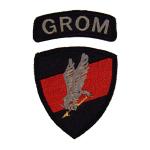
спецподразделение "Гром"
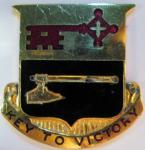
633rd Field Artillery
Змінити інформацію
Description
A 2 1/4 inch (5.72 cm) overall square one angle up consisting of a 1 1/2 inch (3.81 cm) scarlet square bearing a white castle tower of three battlements and pointed at base paralleling the sides of the square on a 2 inch (5.08 cm) white square divided throughout by a 1/4 inch (.64 cm) wide scarlet saltire all within a 1/8 inch (.32 cm) scarlet border.
Symbolism
The colors scarlet and white are used for the Corps of Engineers, the castle tower being suggested by the Corps of Engineers branch insignia and its base pointed in reference to the Brigade’s combat requirements. The tower also represents the Headquarters of the Brigade and the white areas, simulating carpenter squares, grouped around it allude to the engineer combat and construction groups which it serves, the four areas specifically referring to the Headquarters basic mission of command, operational planning, operational supervision, and coordination of activities. The tower and white areas also simulate heavy construction (buildings, compounds, fortifications, bunkers, revetments, runways, roads, etc.) and on being placed on a square allude to the establishment of bases, the red border and the red saltire referring to lines of communication. In addition, the four white areas also resemble the letter “V” for victory (successful accomplishment) and the Roman numeral five (V) four of which make “20,” the numerical designation of the Brigade. A saltire is also the Brigade symbol used on maps.
Background
The shoulder sleeve insignia was approved on 30 June 1967. It was amended to add the blue and white “Airborne” tab on 14 January 1975. The insignia was amended effective 16 September 2009, to delete the airborne tab. (TIOH Drawing Number A-1-460)
A 2 1/4 inch (5.72 cm) overall square one angle up consisting of a 1 1/2 inch (3.81 cm) scarlet square bearing a white castle tower of three battlements and pointed at base paralleling the sides of the square on a 2 inch (5.08 cm) white square divided throughout by a 1/4 inch (.64 cm) wide scarlet saltire all within a 1/8 inch (.32 cm) scarlet border.
Symbolism
The colors scarlet and white are used for the Corps of Engineers, the castle tower being suggested by the Corps of Engineers branch insignia and its base pointed in reference to the Brigade’s combat requirements. The tower also represents the Headquarters of the Brigade and the white areas, simulating carpenter squares, grouped around it allude to the engineer combat and construction groups which it serves, the four areas specifically referring to the Headquarters basic mission of command, operational planning, operational supervision, and coordination of activities. The tower and white areas also simulate heavy construction (buildings, compounds, fortifications, bunkers, revetments, runways, roads, etc.) and on being placed on a square allude to the establishment of bases, the red border and the red saltire referring to lines of communication. In addition, the four white areas also resemble the letter “V” for victory (successful accomplishment) and the Roman numeral five (V) four of which make “20,” the numerical designation of the Brigade. A saltire is also the Brigade symbol used on maps.
Background
The shoulder sleeve insignia was approved on 30 June 1967. It was amended to add the blue and white “Airborne” tab on 14 January 1975. The insignia was amended effective 16 September 2009, to delete the airborne tab. (TIOH Drawing Number A-1-460)
Ще з цієї категорії: Інженерні війська
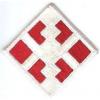 Нарукавний знак 411 інженерної бригади СВ США
Нарукавний знак 411 інженерної бригади СВ США
 117th Engineer Brigade
117th Engineer Brigade
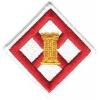 Нарукавний знак 926 інженерної бригади СВ США
Нарукавний знак 926 інженерної бригади СВ США
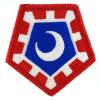 117th Engineer Brigade
117th Engineer Brigade
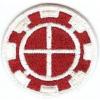 Нарукавний знак 35 інженерної бригади СВ США
Нарукавний знак 35 інженерної бригади СВ США



